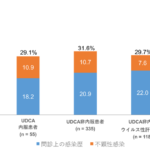2023-08-02 アイルランド・リムリック大学(UL)
◆研究では、4,000人以上の高齢者を10年間追跡し、煤煙禁止の拡大によって慢性肺疾患の新たな症例が約23%減少したと結論づけました。アイルランドでは固形燃料の使用率が高く、禁止によって健康へのポジティブな影響が見られました。
<関連情報>
- https://www.ul.ie/research/news/ul-study-reveals-the-smoky-coal-ban-in-ireland-significantly-reduced-the-probability
- https://www.sciencedirect.com/science/article/pii/S1570677X23000564
アイルランドの高齢者における「煙の多い」石炭禁止が慢性肺疾患に及ぼす影響 The effect of “smoky” coal bans on chronic lung disease among older people in Ireland
Seán Lyons, Likun Mao, Anne Nolan, Vincent O’Sullivan
Economics and Human Biology Available online: 13 July 2023
DOI:https://doi.org/10.1016/j.ehb.2023.101275

Highlights
•For a wealthy European country, Ireland has a relatively high proportion of households who use open fires for heating.
•Bans on the sale and burning of “smoky” coal were expanded from cities to towns during the 2010 s.
•The expansion of the ban to these towns reduced the incidence of chronic lung disease by between 0.96 and 2.5 percentage points.
•There was no effect of the ban on incidence of asthma or on mortality.
Abstract
Globally, coal is still widely used for heating. However, there are concerns about its effect on ambient air quality and health. We estimated the effect of bans prohibiting the sale and use of so-called “smoky coal” on the prevalence of chronic lung disease in older people. Our identification strategy relied on the phased extension of smoky coal bans to Irish towns after 2010. We examined five waves of The Irish Longitudinal Study on Ageing (TILDA), a large nationally representative survey containing detailed information on health, housing, and socio-economic status. Controlling for relevant factors, smoky coal bans reduced the probability that an older person reports being diagnosed with chronic lung disease by between three and five percentage points. In models where we estimated the effect of the ban on the incidence of new cases of chronic lung disease, rather than existing cases, we found the effect was between -0.96 and -2.5 percentage points. Our findings were robust to estimating the model using different sub-samples and control variables. Furthermore, to address potential endogeneity of the ban, we examined subsamples defined by whether participants lived in towns within a range of the population threshold at which the ban was imposed. Estimating our model using these subsamples showed a consistently negative effect of the ban. We also showed parallel trends in health outcomes before the treatment, and that the treatment did not affect attrition from the sample.


